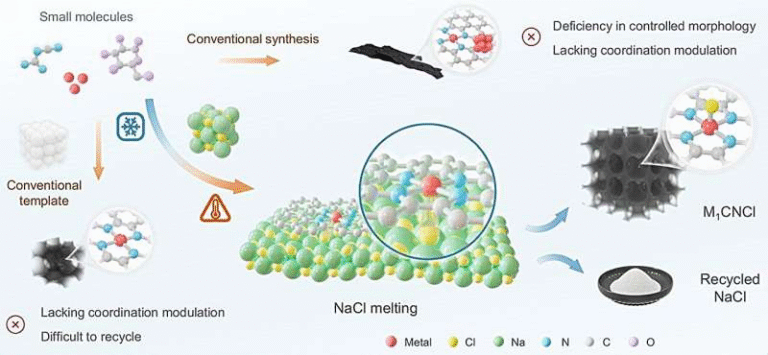Orforglipron: A New Daily Pill That Helps People With Obesity Lose Significant Weight

A new clinical trial has shown that orforglipron, an oral GLP-1 receptor agonist, could become a major alternative to injectable weight-loss drugs. The results, presented at the Annual Meeting of the European Association for the Study of Diabetes (EASD) in Vienna and published in the New England Journal of Medicine (NEJM), reveal that this once-daily pill helped participants achieve an average weight loss of up to 11.2% of their body weight over 72 weeks.
This is important because most GLP-1 based treatments currently available, such as semaglutide, are given as injections. A pill has the potential to expand access, lower costs, and improve patient willingness to stay on treatment. Let’s dive into the specifics of the study, the drug itself, and what this could mean for the future of obesity care.
What Exactly Is Orforglipron?
Orforglipron, also called LY-3502970, is a small-molecule, non-peptide drug. It works by targeting the GLP-1 receptor in the body, the same pathway used by popular injectable drugs like semaglutide (Ozempic, Wegovy) and tirzepatide (Mounjaro, Zepbound).
The GLP-1 receptor is linked to appetite, blood sugar control, and metabolism. By activating it, these drugs help reduce hunger, slow digestion, and improve cardiometabolic health markers. What makes orforglipron special is that it can be taken orally once a day without food restrictions, unlike oral semaglutide which requires fasting before and after dosing.
Developed by Eli Lilly, after being licensed from Chugai Pharmaceutical in 2018, orforglipron is being studied in multiple Phase 3 trials for both obesity and type 2 diabetes.
Details of the Phase 3 Obesity Trial (ATTAIN-1)
Study Design
- Type of study: Randomized, double-blind, placebo-controlled, Phase 3 trial.
- Participants: 3,127 adults with obesity who did not have type 2 diabetes.
- Countries involved: United States, China, Brazil, India, Japan, South Korea, Spain, Slovakia, and Taiwan.
- Duration: 72 weeks.
- Dosing groups: Participants received orforglipron at 6 mg, 12 mg, or 36 mg once daily, or placebo.
- Support provided: All participants also received lifestyle guidance on healthy eating and physical activity.
- Completion rates: High overall—87.5% in the 36 mg group finished the trial.
Main Results
- Average weight loss after 72 weeks:
- −7.5% with 6 mg
- −8.4% with 12 mg
- −11.2% with 36 mg
- Compared with −2.1% in the placebo group
- Proportion of participants achieving weight-loss milestones in the 36 mg group:
- 54.6% lost at least 10% of body weight
- 36.0% lost at least 15%
- 18.4% lost at least 20%
- In the placebo group, these rates were 12.9%, 5.9%, and 2.8%, respectively
Other Health Improvements
- Waist circumference decreased significantly with orforglipron.
- Blood pressure: Average systolic blood pressure dropped by −5.7 mm Hg (vs −1.4 mm Hg with placebo).
- Triglycerides: Reduced by 14.8% (vs 3.8% placebo).
- Non-HDL cholesterol: Reduced by 6.7% (vs 1.9% placebo).
- Markers of inflammation such as high-sensitivity C-reactive protein also improved.
These improvements are important because a 10% or more weight reduction is generally recognized as a threshold linked to meaningful health benefits like reduced risk of cardiovascular disease and type 2 diabetes.
Safety and Side Effects
As with other GLP-1 receptor agonists, gastrointestinal issues were the most common side effects—things like nausea, diarrhea, constipation, and vomiting.
- Discontinuation rates due to adverse events:
- 2.7% for placebo
- 5.3% for 6 mg
- 7.9% for 12 mg
- 10.3% for 36 mg
Most side effects occurred early in treatment during dose escalation and were considered mild to moderate. Importantly, there were no major liver safety concerns.
Strengths and Weaknesses of the Study
Strengths:
- Large, diverse sample size across nine countries.
- Clear dose-response relationship shown.
- High trial completion rates.
- Comprehensive data on both weight loss and cardiometabolic improvements.
Limitations:
- No direct comparison with injectable GLP-1 medications like semaglutide or tirzepatide.
- BMI criteria based mainly on standards from White populations, which may limit how results apply to people from other ethnic groups with different body-fat risk thresholds.
- Growing availability of weight-loss drugs may have influenced how participants adhered to the study.
How Does Orforglipron Compare to Other GLP-1s?
Injectable GLP-1s like semaglutide (Wegovy) and tirzepatide (Zepbound) often lead to 15–20% weight reductions. Orforglipron, at 11.2% for the highest dose, is slightly less potent on average but offers the convenience of being a simple daily pill.
Another oral option on the market is oral semaglutide (Rybelsus), but it requires fasting and strict timing, making it less convenient. In a separate head-to-head Phase 3 trial (ACHIEVE-3), orforglipron actually outperformed oral semaglutide in both blood sugar control and weight loss among people with type 2 diabetes:
- A1C reduction: −2.2% for orforglipron (36 mg) vs −1.4% for semaglutide (14 mg).
- Weight loss: 9.2% with orforglipron vs 5.3% with semaglutide at the highest doses.
- However, discontinuation rates due to side effects were higher with orforglipron.
This shows that orforglipron could become the leading oral GLP-1 drug, especially for those who prefer pills over injections.
Why Oral Options Matter
Injectable medications have proven extremely effective, but many patients either dislike injections or find them inconvenient. Oral drugs could:
- Increase accessibility in regions where injectable storage and supply are more difficult.
- Improve adherence among patients hesitant about needles.
- Potentially lower costs, since small-molecule drugs like orforglipron are usually less expensive to manufacture than peptide-based injectables.
Eli Lilly has stated that regulatory submissions for obesity treatment are planned in late 2025, with type 2 diabetes approval targeted for 2026.
The Bigger Picture: Obesity and GLP-1 Therapies
Obesity as a Global Health Problem
Obesity is one of the most pressing health challenges worldwide. It increases the risk of type 2 diabetes, heart disease, certain cancers, and reduced life expectancy. Traditional management—diet, exercise, and behavioral changes—often doesn’t deliver enough results for those with severe obesity.
That’s where GLP-1 therapies have been game-changers. By addressing both weight and cardiometabolic health, they’re redefining how doctors treat obesity, shifting it from being seen purely as a lifestyle issue to a chronic medical condition that can be effectively managed with medication.
The GLP-1 Revolution
GLP-1 drugs like semaglutide and tirzepatide have exploded in popularity in recent years. They not only promote weight loss but also reduce the risk of cardiovascular events, making them attractive for people at risk of heart disease.
The downside has been cost and availability. High global demand has caused shortages, and injections make access more challenging for many patients. That’s why orforglipron and other oral GLP-1s in development are drawing so much attention.
What Comes Next?
There are still questions to answer:
- Will orforglipron show long-term safety and tolerability in real-world use?
- How will its efficacy compare head-to-head with injectable drugs in larger obesity populations?
- Will insurers and health systems cover it widely?
- How will pricing affect its global accessibility?
If approved, orforglipron could open the door for millions of people who were previously left out of GLP-1 therapy due to cost, logistics, or injection hesitancy.
Final Thoughts
The results of the ATTAIN-1 trial confirm that orforglipron is not just a minor development—it’s a serious contender in the field of obesity treatments. While injectable drugs may still be slightly more powerful, the combination of solid weight loss, improved metabolic health, and the convenience of a pill makes orforglipron one of the most promising weight-loss options on the horizon.
If obesity medications are to become truly mainstream and accessible, oral therapies like orforglipron will likely play a big role in that future.
Research Reference: Orforglipron, an Oral Small-Molecule GLP-1 Receptor Agonist for Obesity Treatment – NEJM (2025)





